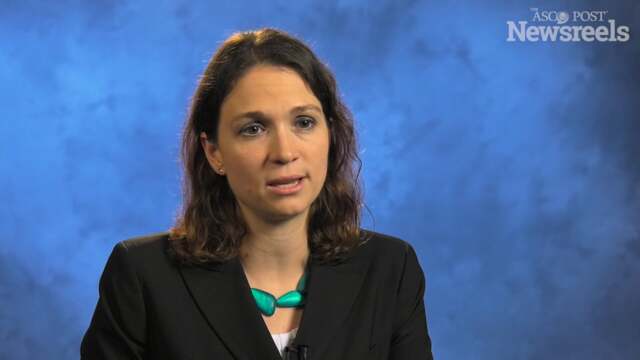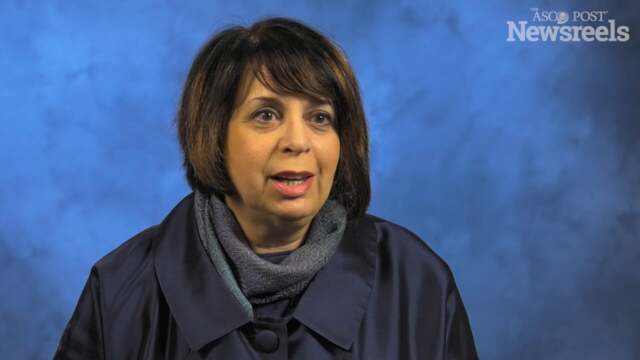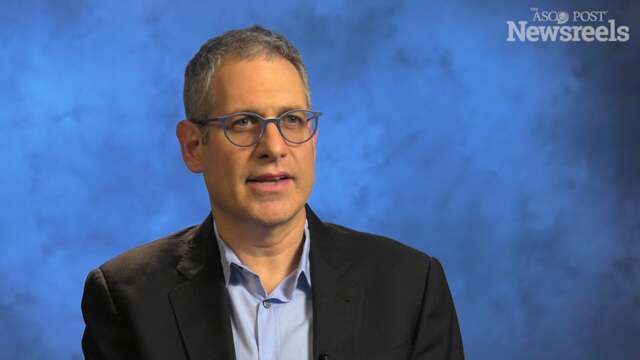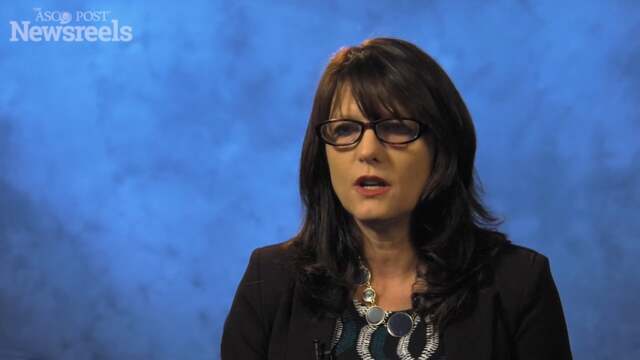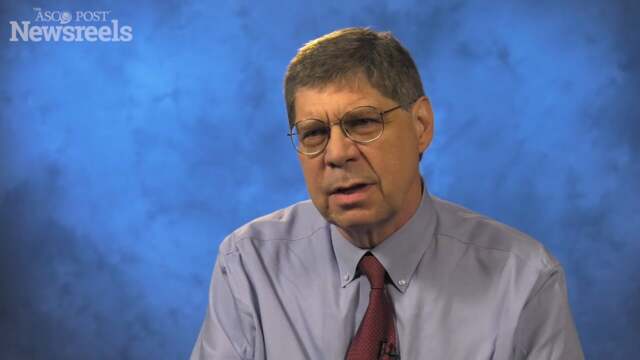Julie Bryar Porter, MS, on Improving Care: One Center’s Experience
2017 Quality Care Symposium
Julie Bryar Porter, MS, of Stanford Health Care, discusses an approach to improving patient care with physician-led quality measures from diagnosis through end of life implemented at her academic cancer center (Abstract 49).
Gabrielle Rocque, MD, of the University of Alabama at Birmingham, discusses the challenges of implementing Oncology Care Model requirements, such as providing treatment plans, and the opportunities to transform practices with improved workflow and patient outcomes.
Diana D. Jeffery, PhD, of the Defense Health Agency, discusses the need to screen for mental health comorbidities, including depression, anxiety, adjustment disorders, substance use disorders, and persistent mental illnesses, as shown in a study of breast and prostate cancer patients (Abstract 18).
Ethan M. Basch, MD, of The University of North Carolina at Chapel Hill, discusses programs—now rolling out at various institutions—that use direct patient reporting of symptoms as a part of quality assessment (Posters 61, 81; Abstract 218).
Gwendolyn P. Quinn, PhD, of Moffitt Cancer Center, discusses the challenges that minority, LGBTQ, low-literacy, and underserved populations face in getting their voices heard and what it will take to change that.
John V. Cox, DO, MBA, of the Parkland Health System/UTSW, discusses some of the key presentations at the 2017 Quality Care Symposium (Abstracts 3, 37, 52).
